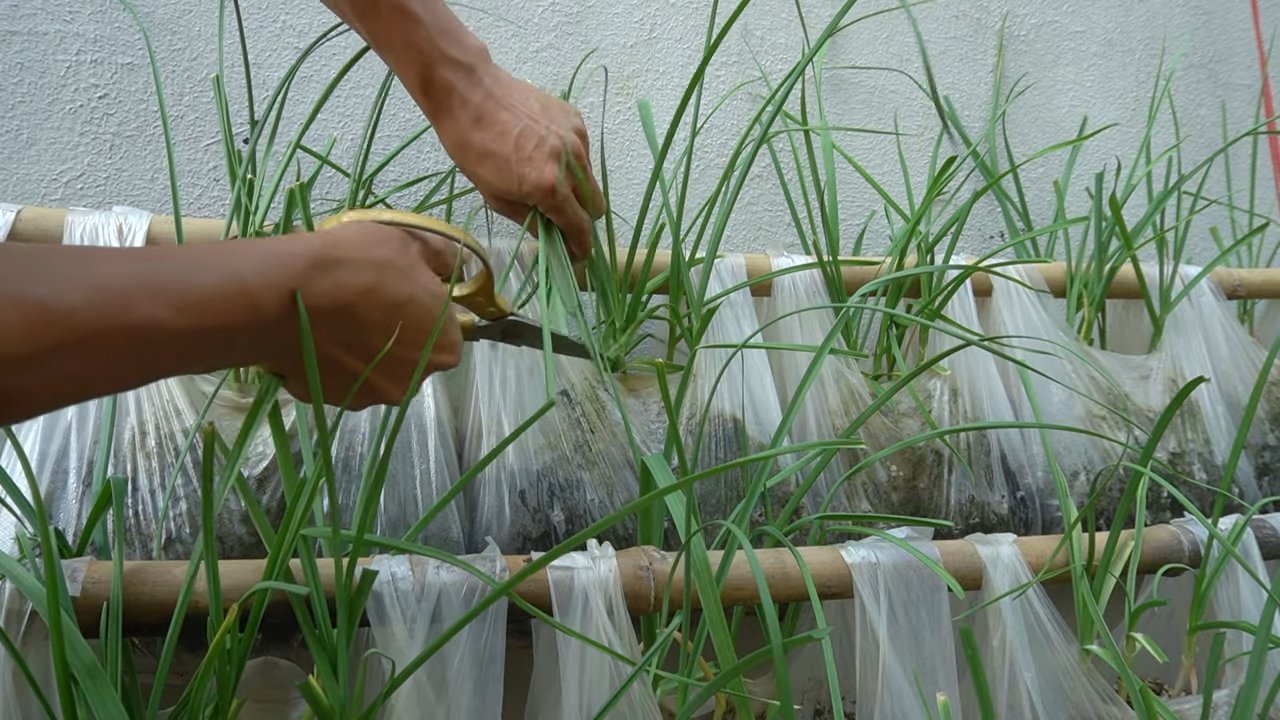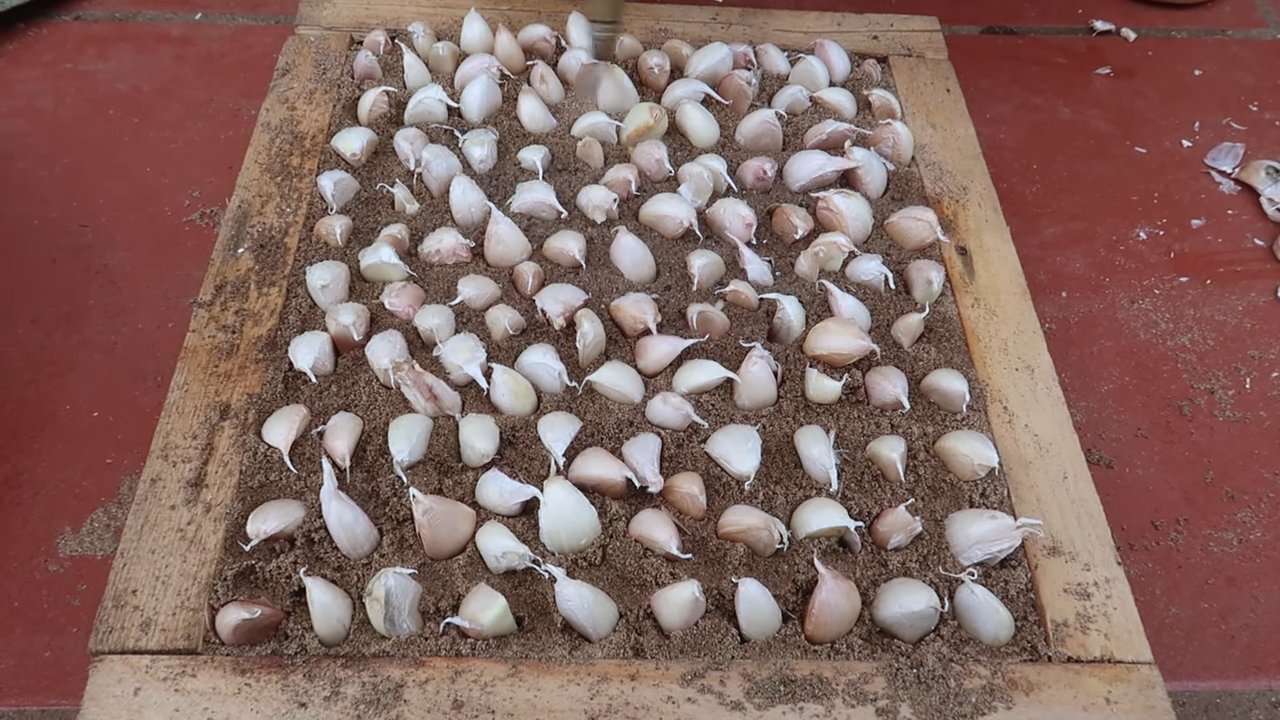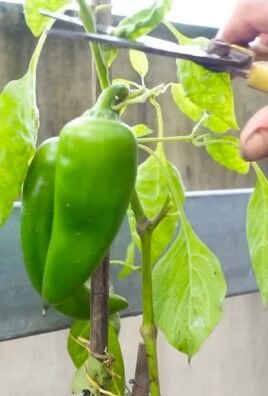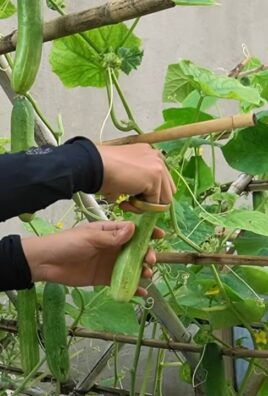Grow potatoes easily, even if you think you don’t have a green thumb! Have you ever dreamed of harvesting your own homegrown potatoes, bursting with flavor and freshness, right from your backyard (or even your balcony)? It’s easier than you think, and this DIY guide will unlock the secrets to a bountiful potato harvest.
Potatoes have been a staple food for centuries, with a rich history that spans continents. From their origins in the Andes Mountains of South America to their widespread cultivation across the globe, potatoes have nourished populations and shaped cultures. Think about the Irish potato famine, a stark reminder of the potato’s significance in human history. Now, you can connect with that history by growing your own!
In today’s busy world, many of us crave a connection to nature and a sense of self-sufficiency. Growing your own food, even something as simple as potatoes, offers a rewarding experience. Plus, store-bought potatoes often lack the vibrant flavor of freshly harvested ones. This DIY trick will show you how to grow potatoes easily, saving you money at the grocery store and providing you with delicious, homegrown goodness. I’m excited to share these simple steps with you, so let’s get started and transform your garden into a potato paradise!

Easily Grow Your Own Potatoes: Your DIY Guide for a Bountiful Harvest
Hello dear garden friends! Do you want to grow your own potatoes? It’s easier than you think, and the feeling of having your own harvested tubers on your plate is simply priceless. In this guide, I’ll show you how to achieve a rich potato harvest with simple means and without much effort. Let’s go!
What You Need: The Preparation
Before we get started, we obviously need the right equipment and materials. Here’s a list so you have everything ready:
- Seed potatoes: Choose a variety that you like and that is suitable for your climate. Early potatoes are ideal if you want to harvest quickly.
- Buckets or grow bags: Large buckets (at least 10 liters) or special grow bags are perfect for growing on a balcony or terrace.
- Garden soil: Good, loose garden soil is important for the growth of potatoes. You can also mix potting soil with compost.
- Compost or organic fertilizer: For a good supply of nutrients for the potatoes.
- Watering can: For regular watering.
- Spade or shovel: For filling the buckets or grow bags.
- Mulch material (optional): Straw or hay to keep the soil moist and suppress weeds.
Step-by-Step Guide: Growing Potatoes in a Bucket or Grow Bag
Now let’s get down to it! Here is a detailed guide on how to grow your potatoes in a bucket or grow bag:
1. Preparing the Seed Potatoes (Pre-sprouting)
- Why pre-sprout? Pre-sprouting the seed potatoes speeds up growth and ensures an earlier harvest.
- How it’s done: Place the seed potatoes in a bright, cool place (approx. 10-15°C) about 4-6 weeks before the planned planting date. a basement window or a cool garage are ideal.
- Eyes up: Make sure the “eyes” (the small buds) are facing upwards.
- Wait and watch: After a few weeks, small, green shoots will form. That’s a good sign!
2. Preparing the Buckets or Grow Bags
- Drainage is important: Drill holes in the bottom of the buckets so that excess water can drain away. This is usually already provided in grow bags.
- Fill with soil: Fill the buckets or grow bags about 15-20 cm high with garden soil.
- Add fertilizer: Mix some compost or organic fertilizer into the soil.
3. Planting the Seed Potatoes
- The right depth: Place the pre-sprouted seed potatoes with the shoots facing upwards on the soil.
- Keep your distance: If you plant several potatoes in one bucket, make sure to leave a distance of about 20-30 cm.
- Cover with soil: Cover the potatoes with about 10 cm of soil.
- Water in: Water the soil gently.
4. Hilling: The Key to Success
- Why hill? Hilling promotes the formation of new potatoes on the stems and protects the tubers from sunlight (which would make them green and inedible).
- When to hill? As soon as the potato plants have grown to about 20 cm high, you hill up soil around the stems so that only the top leaves are showing.
- Repeat: Repeat the hilling every few weeks until the bucket or grow bag is almost full.
5. Watering and Fertilizing
- Water regularly: Potatoes need sufficient water, especially during the flowering period. Make sure the soil is always slightly moist, but not wet.
- Don’t forget to fertilize: Fertilize the potatoes every few weeks with compost tea or an organic liquid fertilizer.
6. Keeping an Eye on Pests and Diseases
- Potato beetles: The larvae and beetles eat the leaves. Collect them by hand or use a biological insecticide.
- Late blight: A fungal disease that occurs especially in damp weather. Watch for brown spots on the leaves and tubers. Remove affected leaves and ensure good ventilation.
- Prevention is important: Good ventilation, regular watering from below (not over the leaves), and balanced fertilization help to prevent diseases.
The Harvest: The Reward for Your Efforts
- When to harvest? The time of harvest depends on the potato variety. Early potatoes are usually ready for harvest after about 8-10 weeks.
- How to harvest: Carefully tip over the bucket or grow bag and collect the potatoes.
- Storage: Store the potatoes in a cool, dark, and dry place.
Additional Tips and Tricks for a Successful Potato Harvest
- Sunny location: Potatoes love the sun! Choose a location that gets at least 6 hours of sun per day.
- Good ventilation: Ensure good ventilation to prevent diseases.
- Mulching: Mulch the soil with straw or hay to retain moisture and suppress weeds.
- Try different varieties: Try different potato varieties to find out which ones grow best in your garden or on your balcony.
- Don’t plant in the same place every year: Rotate the location of the potatoes each year to prevent diseases and pests.
Frequently Asked Questions (FAQ)
- Can I also grow potatoes in pots? Yes, this is easily possible. Just make sure the pots are large enough (at least 10 liters).
- Do I absolutely have to pre-sprout the seed potatoes? No, it’s not absolutely necessary, but it speeds up growth and ensures an earlier harvest.
- What do I do if my potato plants are infested with potato beetles? Collect the beetles and larvae by hand or use a biological insecticide.
- How do I know if my potatoes are ready to harvest? The leaves of the potato plants turn yellow and wilt. You can also carefully dig up a potato to see if it has reached the desired size.
- Can I reuse the soil from the bucket next year? Yes, you can reuse the soil, but you should enrich it with compost or organic fertilizer beforehand.
I hope this guide helps you to successfully grow your own potatoes. Happy gardening and a bountiful harvest

Conclusion
So, there you have it! Growing potatoes easily at home is not just a pipe dream; it’s an achievable and rewarding experience that brings the farm-to-table concept right to your backyard (or balcony!). We’ve walked you through a simple yet effective method that bypasses the complexities often associated with traditional potato farming. This DIY approach, focusing on container gardening and strategic layering, unlocks the potential for a bountiful harvest even in limited spaces.
Why is this a must-try? Because it empowers you to control the entire process, from seed to spud. You know exactly what goes into your potatoes – no hidden pesticides or questionable fertilizers. Plus, there’s an undeniable satisfaction in nurturing a plant from a tiny seed potato to a thriving, potato-producing powerhouse. Imagine the look on your family’s faces when you serve them a meal featuring potatoes you grew yourself!
But the beauty of this method lies in its adaptability. Feel free to experiment! Try different varieties of potatoes – Yukon Gold for creamy mashed potatoes, Russets for fluffy baked potatoes, or fingerlings for a gourmet touch. You can also adjust the size of your container to suit your available space. Want to add a companion plant? Marigolds can help deter pests, while basil can enhance the flavor of your potatoes.
Don’t be afraid to get your hands dirty and embrace the learning process. Gardening is all about experimentation, and even if you encounter a few bumps along the way, you’ll gain valuable knowledge and a deeper appreciation for the food you eat.
We wholeheartedly encourage you to give this DIY potato-growing trick a try. It’s a fun, educational, and ultimately delicious way to connect with nature and enjoy the fruits (or rather, vegetables!) of your labor. And most importantly, it demonstrates that growing potatoes easily is within everyone’s reach.
Once you’ve harvested your first batch of homegrown potatoes, we’d love to hear about your experience! Share your photos, tips, and any variations you tried in the comments below. Let’s create a community of potato-growing enthusiasts and inspire others to embark on this rewarding journey. Happy growing!
Frequently Asked Questions (FAQ)
What kind of container should I use for growing potatoes?
The ideal container should be at least 2 feet in diameter and 2 feet deep. This provides ample space for the potato plants to develop a healthy root system and produce a good yield. You can use plastic pots, wooden crates, grow bags, or even repurposed containers like old trash cans (with drainage holes, of course!). Ensure the container has adequate drainage to prevent waterlogging, which can lead to root rot. Dark-colored containers tend to absorb more heat, which can be beneficial in cooler climates but may require more frequent watering in hotter regions.
How often should I water my potato plants?
Watering frequency depends on several factors, including the climate, the type of container, and the stage of growth. Generally, you should water your potato plants deeply whenever the top inch of soil feels dry to the touch. Avoid overwatering, as this can lead to fungal diseases. During hot, dry periods, you may need to water daily. A good rule of thumb is to water thoroughly until you see water draining from the bottom of the container. As the plants mature and the tubers begin to form, they will require more water.
What kind of soil should I use?
Potatoes prefer well-draining, slightly acidic soil with a pH between 6.0 and 6.5. A good potting mix specifically formulated for vegetables is ideal. You can also create your own mix by combining equal parts of compost, peat moss (or coconut coir), and perlite or vermiculite. Compost provides essential nutrients, peat moss (or coconut coir) helps retain moisture, and perlite or vermiculite improves drainage. Avoid using heavy clay soil, as it can become compacted and restrict root growth.
How much sunlight do potato plants need?
Potato plants need at least 6-8 hours of direct sunlight per day to thrive. Choose a location that receives plenty of sunlight throughout the day. If you live in a particularly hot climate, some afternoon shade may be beneficial to prevent the plants from overheating. Insufficient sunlight can result in weak, leggy plants and reduced potato production.
When is the best time to plant potatoes?
The best time to plant potatoes depends on your climate. In general, you should plant them in early spring, about 2-4 weeks before the last expected frost. The soil temperature should be at least 45°F (7°C). In warmer climates, you can plant potatoes in late winter or early spring for a spring harvest, or in late summer for a fall harvest. Check your local gardening resources for specific planting dates in your area.
How do I know when my potatoes are ready to harvest?
Potato plants typically take 80-100 days to mature. You can start harvesting “new potatoes” (small, immature potatoes) about 2-3 weeks after the plants flower. To harvest new potatoes, carefully dig around the base of the plant and remove a few potatoes, leaving the rest to continue growing. For a full harvest of mature potatoes, wait until the foliage starts to turn yellow and die back. This indicates that the potatoes have stopped growing and are ready to be harvested. Dig carefully around the plant to avoid damaging the potatoes.
What are some common pests and diseases that affect potato plants?
Common pests that affect potato plants include aphids, potato beetles, and flea beetles. Aphids can be controlled with insecticidal soap or neem oil. Potato beetles can be hand-picked or controlled with Bacillus thuringiensis (Bt). Flea beetles can be deterred with row covers or insecticidal soap. Common diseases include early blight, late blight, and potato scab. Early blight and late blight can be prevented with good air circulation and by avoiding overhead watering. Potato scab can be minimized by maintaining a slightly acidic soil pH.
Can I grow potatoes from store-bought potatoes?
Yes, you can grow potatoes from store-bought potatoes, but it’s important to choose organic potatoes that haven’t been treated with sprout inhibitors. Look for potatoes that have already started to sprout “eyes.” Cut the potatoes into pieces, ensuring that each piece has at least one eye. Allow the cut pieces to dry for a day or two to form a callus, which will help prevent rot. Plant the pieces as you would seed potatoes. Keep in mind that potatoes grown from store-bought potatoes may not be true to type, meaning they may not produce the same variety of potatoes as the parent potato.
What are some variations on this DIY potato-growing method?
One variation is to use a “potato tower,” which is a tall, cylindrical structure made of wire mesh or wood. As the potato plants grow, you add more soil to the tower, encouraging the plants to produce potatoes along the entire stem. Another variation is to use a straw bale as a growing medium. The straw bale provides excellent drainage and aeration, and it decomposes over time, providing nutrients to the plants. You can also experiment with different types of fertilizers, such as compost tea or fish emulsion, to boost potato production.
How do I store my harvested potatoes?
Store your harvested potatoes in a cool, dark, and dry place with good ventilation. The ideal temperature is between 40-50°F (4-10°C). Avoid storing potatoes near apples or bananas, as these fruits release ethylene gas, which can cause potatoes to sprout prematurely. Properly stored potatoes can last for several months. Check them periodically for signs of spoilage, such as soft spots or sprouts.




Leave a Comment